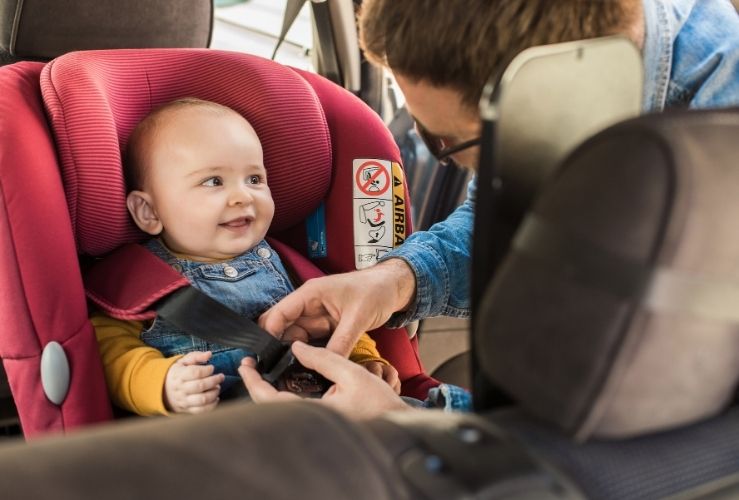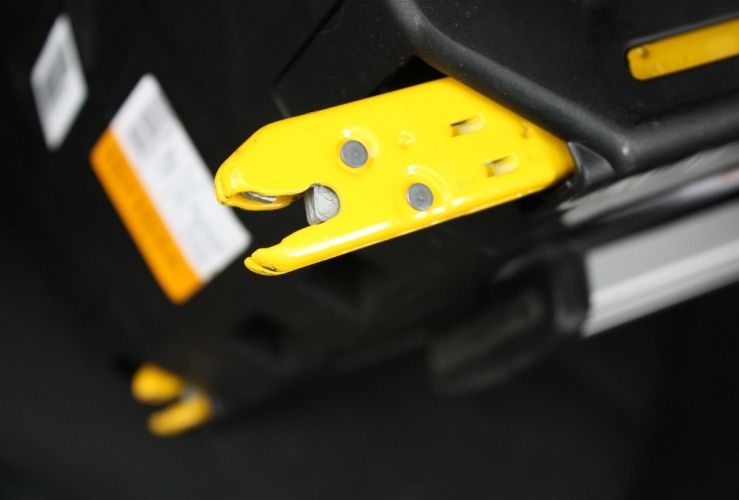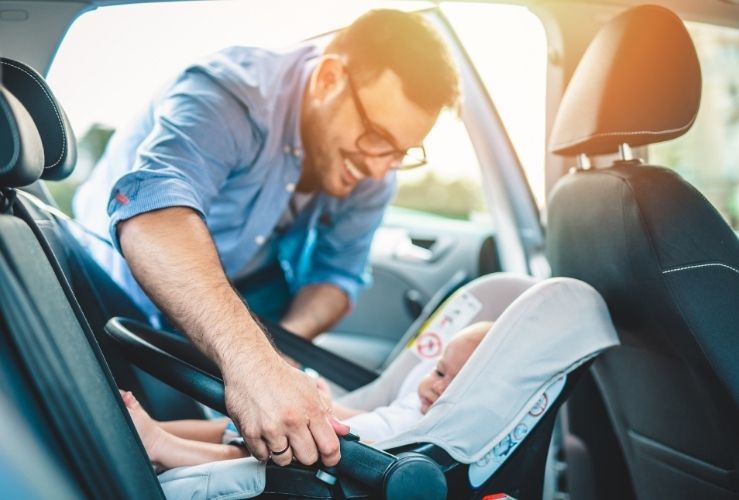Correct installation of child car seats is of course imperative to ensure your child's safety as you drive.
A child car seat must be used for your child until they reach the age of 12, or until they reach 135cm (whichever comes first).
Here we provide a quick installation guide for both main types of child car seat - the seat belt-secured type, and the ISOFIX type.

Seat belt type seats - installation
Some child car seats are designed to be securely fitted to the rear seats by the car’s seat belts.
How do you fit seat belt-secured child car seats?
To fit seat belt-secured child car seats:
- Reel out as much of the seat belt as you can
- Pass the seat belt through the rear chambers of the seat
- Secure the buckle and lock
As the child grows, the configuration will change - i.e., the belt should eventually be passed over the front of the child rather than through the seat's rear structure.
Seat belt-secured child seats offer the advantage of being lighter and easier to move around (compared to ISOFIX).
Note: belt-secured child seats are not suitable for newborn babies.

ISOFIX seat type - installation: How do you fit an ISOFIX seat type?
ISOFIX points are fitted to the rear seats of most cars, with some found in front seats, too.
- Locate ISOFIX tethers - these may be concealed in some models (look for the car seat icon to locate these)
- Secure latches to tethers, and you're good to go.
What are the advantages of ISOFIX seats?
The key advantage to ISOFIX seats is that they are extremely secure, attached as they are to the structure of the vehicle.
With ISOFIX seats, there is no scope for seat belts to shift around. ISOFIX seats are also easy to move from one car to another.
You may need help installing the seat, especially if you are looking after children at the same time.
Are ISOFIX seats better than seatbelt-secured seats?
In terms of safety, ISOFIX seats virtually eliminate the possibility of incorrectly fitting a child car seat - although they are heavier to move around and may cost up to twice as much as regular seats.
Most vehicles now have ISOFIX tethers, although some do not.
Pairing the right seat with your vehicle is critical; for example, some ISOFIX seats may not suit your car in terms of size, shape etc., even if they share the same ISOFIX connections.
Seat belt-secured child seats are still very secure, but there is more scope for them to be fitted incorrectly; a loose or twisted belt could seriously compromise a child's safety.
These older types of seats may be suitable for vehicles that do not have ISOFIX tethers.
Front seat airbags - warning
It could be dangerous to fit a child car seat to a front seat if it's facing an active airbag.
It is illegal to fit a rear-ward facing child seat to a front seat with an active airbag. This is because the rear of the seat is too close to the dashboard, so an activated airbag could cause the child serious injury.

What about infant/newborn car seats?
Seats for infants/newborns are available with ISOFIX or seat belt attachments. Some car seats can be attached with both fitting types. Beware that you may need to buy an additional ISOFIX base in order to fix some seats to the ISOFIX tether, which could be costly.
Most infant/newborn car seats can only be for a certain period, roughly 12-15 months.




